No. 11 High Street
The remaining structure of No. 11 High Street was demolished in 2020 due to its dilapidated state which was considered beyond repair following years of neglect and vandalism. The previous building was thought to have dated to the 18th century, constructed from reddened local brown brick comprising four storeys with brick bands between floors. During the demolition works a penny was found within the mortar of the brickwork on the façade which dated to 1806. This was probably deliberately placed by a bricklayer at the time and provides a reliable date for the construction of this building or part of it.
The earliest evidence for occupation so far comes from a trade directory from 1823 which lists William Morling, perfumer and hairdresser at this address. In 1840 another directory lists John Collins, glass dealer at this address. The shop seems to stay with the Collins family selling china and glass until the end of the 19th century.
A stone with the names of Morling and Collins was found during the demolition works in 2020. Although unclear where in the building this was placed, it may have been put there during alteration works carried out on behalf of John Collins and William Morling – both names associated with the history of the building.
Cash & Co. boot manufacturers took over by the time of the 1896 Kelly’s Trade Directory and remained in that building until at least 1940-1. By the 1960s the shop had been taken over by Turners Shoes.
The last known shop to occupy the building was Anglia Discount Stores in 1993.
No. 11 High Street

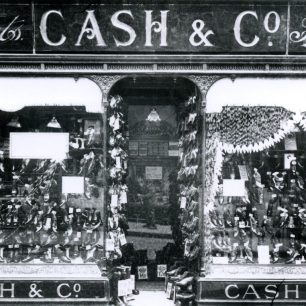
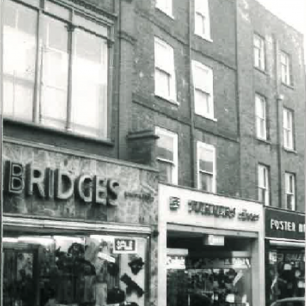
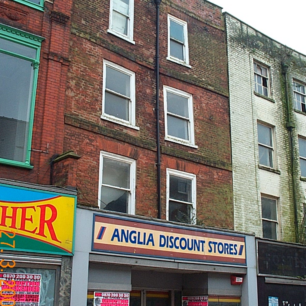

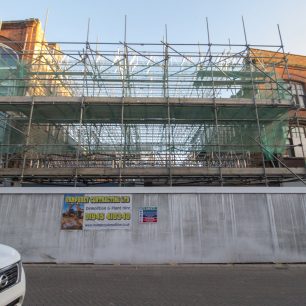
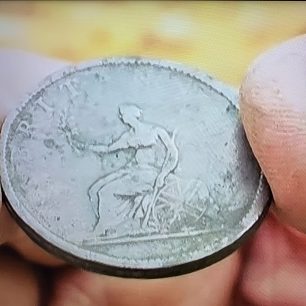
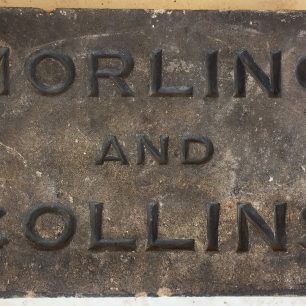





Comments about this page
Very interesting seeing items found and reading a bit of history of the individual building. Look forward to more posts like this. Well done to whoever put this post together.
Fires.- A narrow escape from fire happened at Collins’ lamp warehouse, in High-Street, Wisbech. Through an accident some straw ignited in a warehouse where there were half-a-dozen casks of paraffin oil and a vat of another kind. Happily, Messrs. Dawbarn and Son’s fire brigade were on the spot, and by the able assistance they rendered the fire was put out before it had reached the oil. With a strong wind that was blowing at the time, there is no telling where the damage would have stopped. – Another narrow escape happened in the dwelling-house of Mr. Swain, photographer. Extract from Stamford Mercury Friday, 7th October, 1864.
Straw and paraffin😏
On September 14 1906 it was reported in the press that a ‘Great Fire’ took place and destroyed the premises of Messrs Clayton and co of the High Street (a rear entrance is on Castle Mews aka ‘Sugar Tub Lane’) . The Wisbech fire brigade got the fire under control despite a hose bursting, the Lynn brigade were put on Standby.
It was controlled by 1 o’clock however at 3 o’clock the gable end of Mr Goslings shop was on fire – a bricked up window was slight and the bricks were removed and the frame removed to extinguish it.
The fire appeared to have started in the oil warehouse at the rear.
Damage to the congregational chapel organ despite hanging wet blankets over the windows.
At 8 o’clock on Sunday fire was seen at Cash & Co – tiles were removed and the fire put out.
At 9 o’clock another fire was discovered in a back room sofas by an old beam. A burst hose pipe caused further water damage and another broke out in Clayton’s in the afternoon
The damage estimate at £4-5,000 is covered by insurance.
Add a comment about this page